Tim Page lived the bravado of war correspondence since the day he escaped Laos on his 250cc motorbike, delivering photos of a failed 1965 coup attempt.
United Press International then dispatched the self-taught, 21-year-old British photographer, to Saigon to document America’s impending years of carnage in Vietnam. He had stumbled into photography after leaving home in England to travel across Asia at 17, but his raw, intimate images of conflict reached the pages of Time, Life and the world’s top media for the rest of the decade, contributing to a shift in public opinion against the war.
Page was always a survivor. He died three times in a single day in 1969 when shrapnel lodged in his brain during a mine explosion and his heart stopped beating. Doctors had to resuscitate his heart repeatedly before he finally stabilised.
He remained in action for another 53 years, authoring a multitude of books and exhibiting his images across the world. Page emerged as a vocal force for anti-war and reconciliation across Indochina before passing away for the fourth and final time on Wednesday 25 August, at 78 years old.
In his twenties, Page gained fame for his extravagant persona as the don of “Frankie’s House” in Saigon, named for the beloved Vietnamese houseman who procured marijuana joints and other tools of the trade for the rogue crew of conflict photographers crashing there between trips to the front.
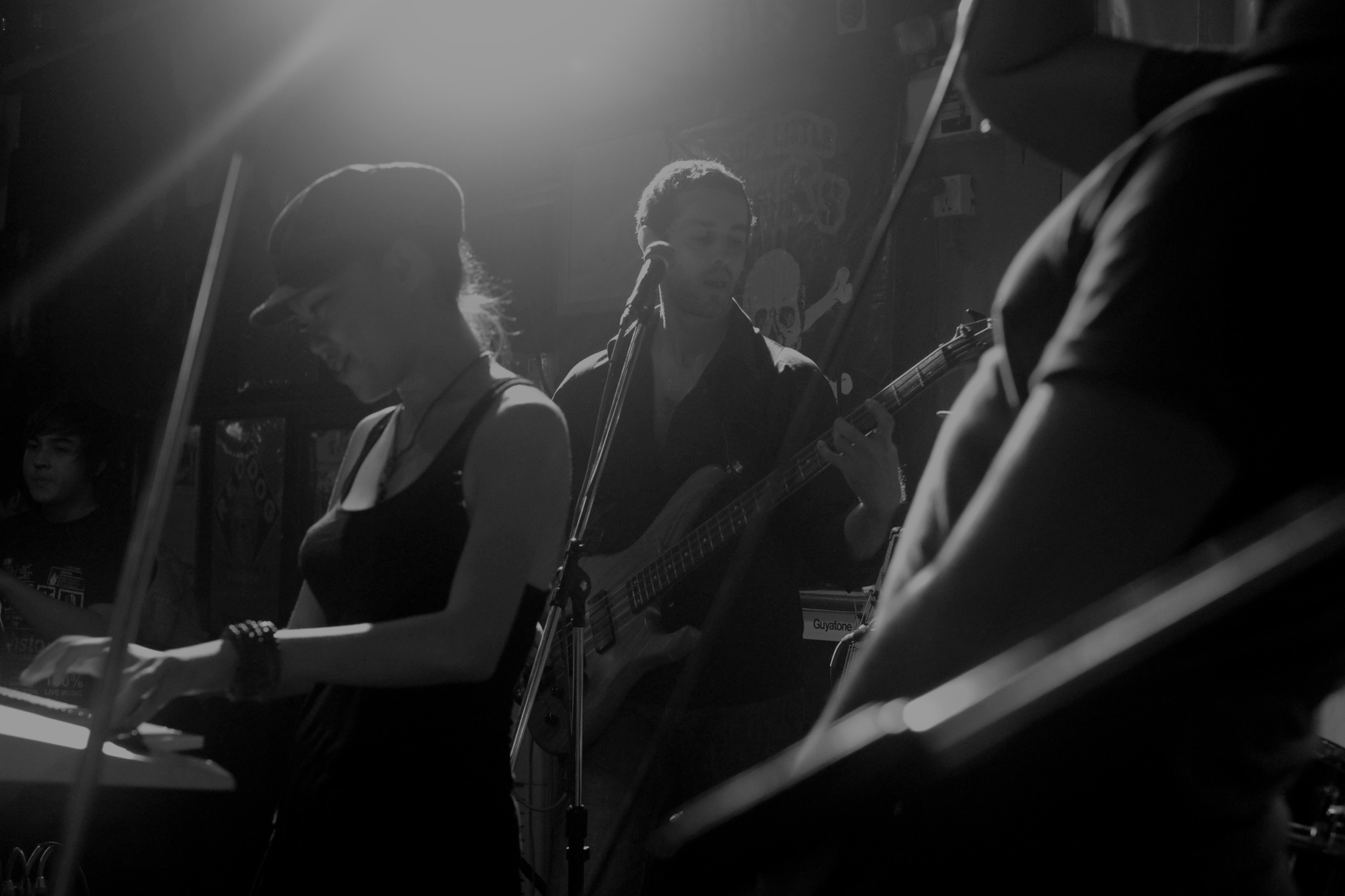
“They are not haphazard friends, these people,” Page explained to BBC. “You went through the worst things in the world and sometimes you saved their ass, sometimes they saved your ass.”
Though he was the inspiration for Dennis Hopper’s eccentric photographer in Apocalypse Now, Page engaged in his craft with deep, abiding sincerity.
He captured the war’s emotional reality. In one image, he documented the exhausted despair of a US soldier slumped against a mottled wall. In another, the grief in the flowing robes of nuns as they left the rubble of their parish to find mangled bodies on the street. His lens also caught the contortions of a Vietnamese woman whose husband was never returning home, and the rage of a Viet Cong suspect’s eyes.
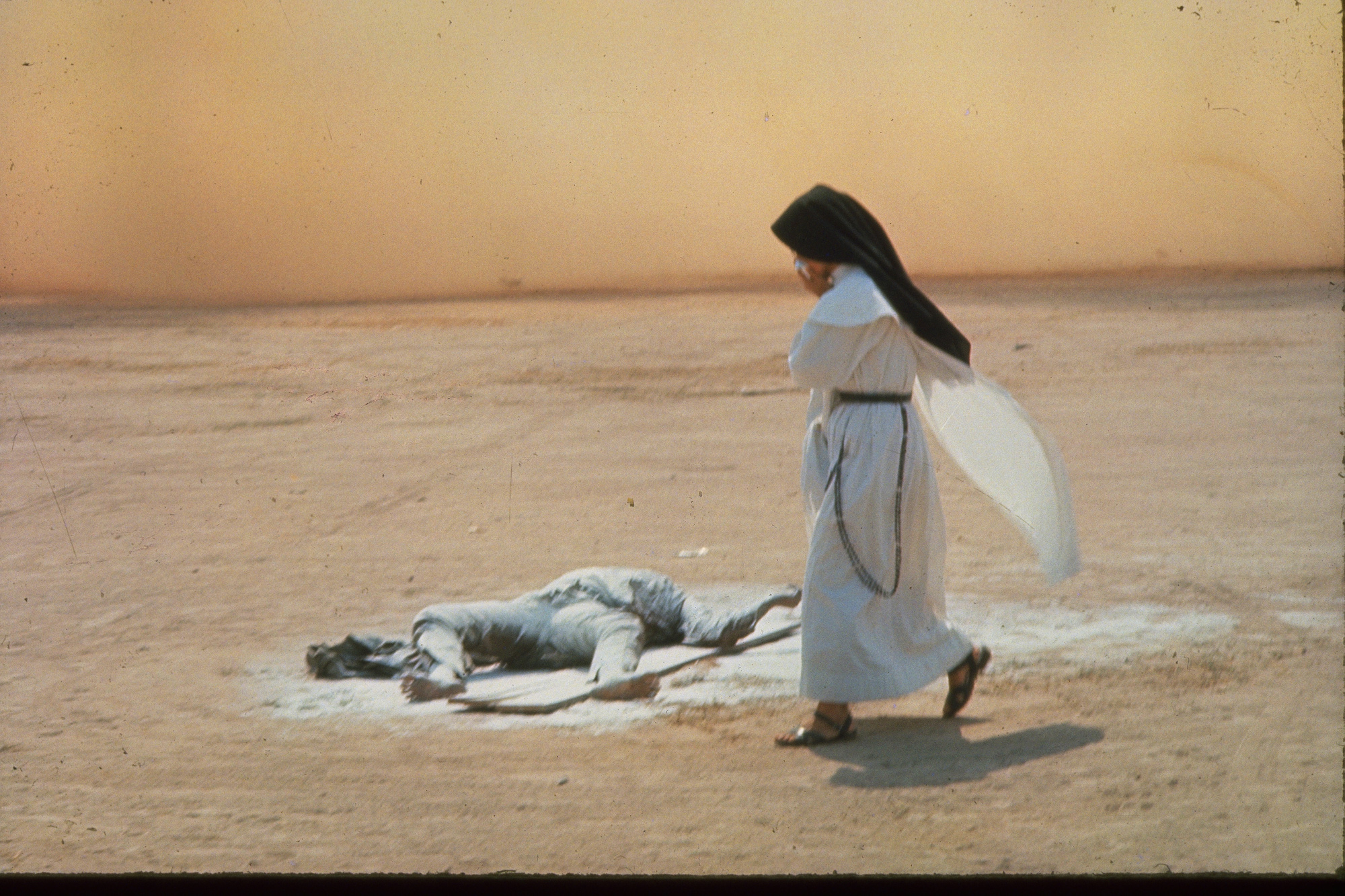
In an era without rapid-fire, auto-focusing digital cameras, Page composed and exposed his images manually on his Leica film camera. Immediately following shell-shocked moments of explosions and ambushes, he snapped photographs between caring for the gravely wounded.
On one of his first trips to the frontlines, Page watched Marines bayonet a suspected Viet Cong soldier. The rookie photographer dry heaved and missed the shot.
“From that time on I never turned away again,” he recounted in his memoir, Page After Page. “The photo had to be shot, no matter what. The field was not a place to let the inner self take control, or you would never go out again. Much less freeze a frame.”
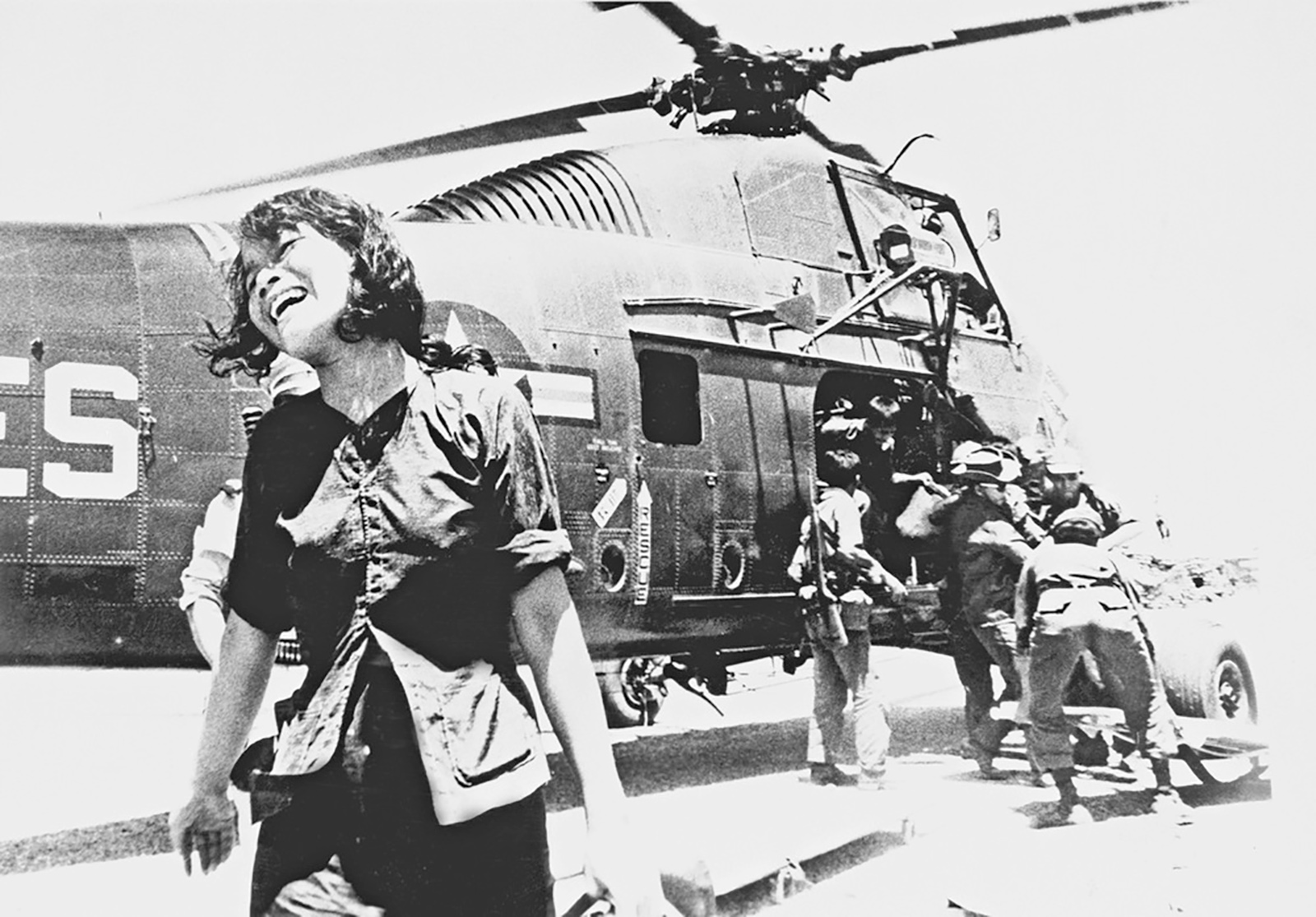
Adorned in his lucky bucket hat with a Chairman Mao badge, Page learned anthills were the best bunkers and developed an instinct for the two seconds needed to leap for cover documenting street gun battles.
He was in the conflict and the conflict was in him, whether from the 200 shrapnel gashes he endured, or the genuine understanding of what life or death really meant. Embedded with special forces under heavy fire, he once had to take a gun himself as a Viet Cong soldier bore down on him.
“This was no time for photography, infrared flash or time exposure,” he later wrote. “It was a time to fight, every man for himself…It is a thing better forgotten; no pride, no regret, just a numb, drained, reality of survival.”
In April 1969, Page received a fateful jag of shrapnel to the forehead while running out to load injured soldiers onto a helicopter. Pronounced dead on arrival, he eventually recovered against doctors’ beliefs. He later wore a hat reading “Dain Bramaged!”
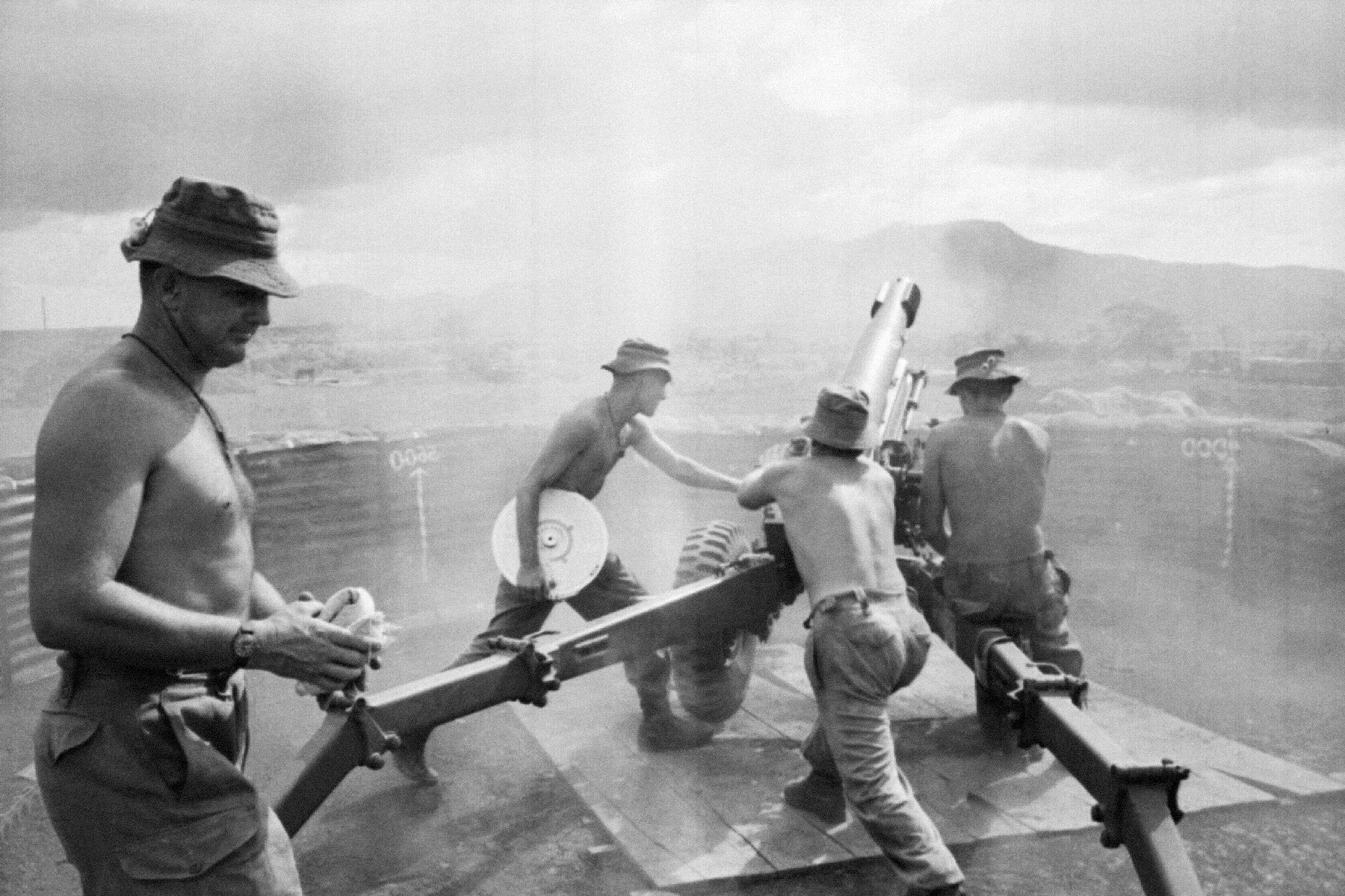
Although he left Vietnam, the war never left him.
Page began working with Vietnam Veterans Against War, serving as a caregiver for amputees and others recovering from the traumas of conflict. He returned to Vietnam to photograph the effects of Agent Orange on Vietnamese children and founded the Indochina Media Memorial Foundation in 1991, to honour photographers on all sides of the Vietnam War.
In 1997, he and former Associated Press (AP) photographer Horst Faas, published REQUIEM, a photo book and permanent exhibition at the War Remnants Museum in Ho Chi Minh City. The project is a homage to the 135 photographers reported missing or killed since the French Indochina war in the 1950s until the fall of Saigon in 1975.
Faas, a two-times Pulitzer prize winner, was the responsible AP journalist who insisted on sending Nick Ut’s famous “Napalm girl” photograph into the world, despite objections on the grounds that the girl was naked and that nobody would accept it.
One lost photographer was Page’s longtime friend, Sean Flynn, son of movie star Errol Flynn, who went missing during a reporting trip in Cambodia in 1970. Page spent decades searching Cambodia for the elusive truth of what happened.
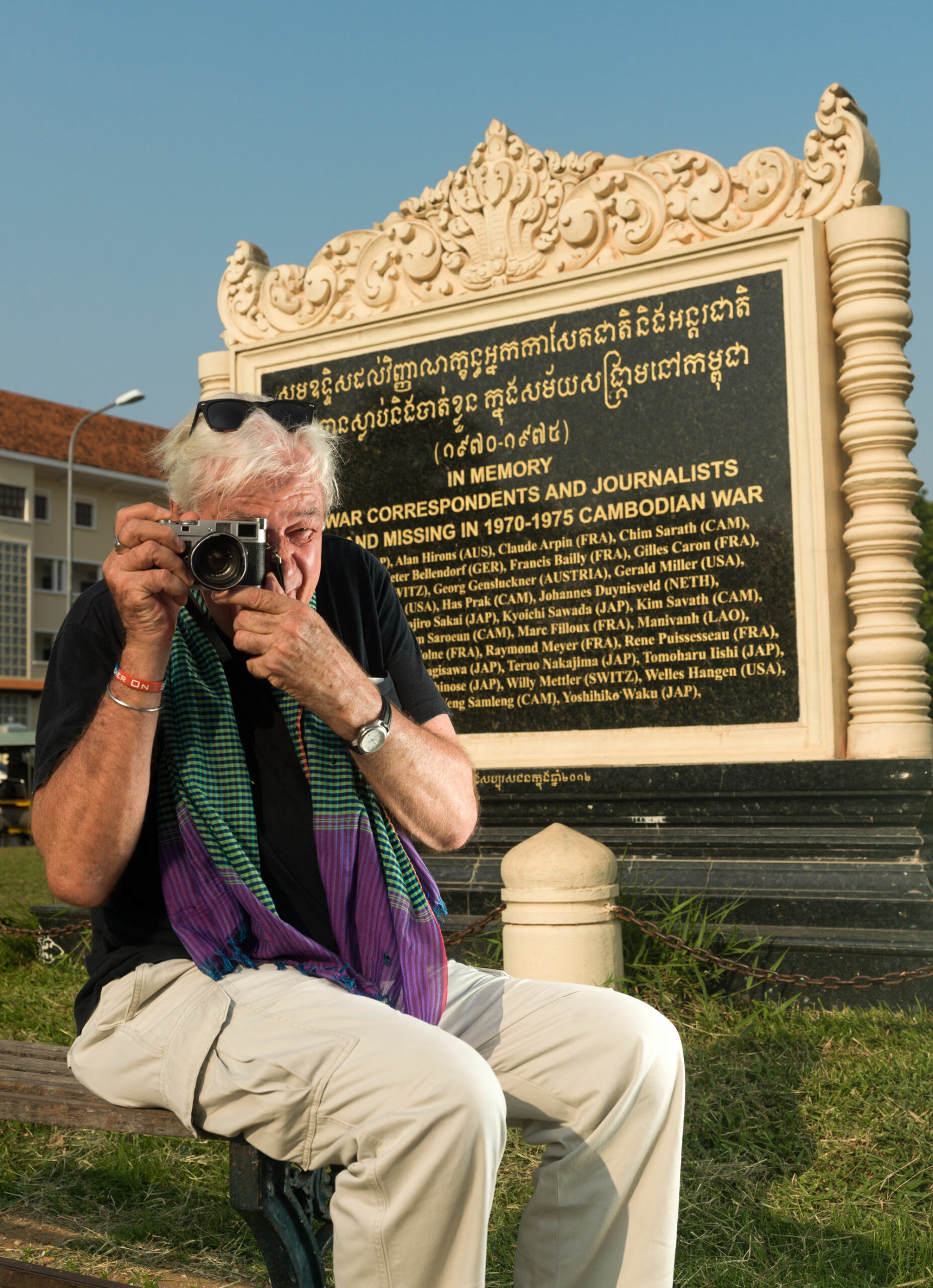
“I don’t think anybody who goes through anything like war ever comes out intact,” Page said. “I suppose the closure of Sean’s fate also has to do with closure of the whole war experience.”
He worked on the ground through the years of United Nations Transitional Authority in Cambodia (UNTAC), snapping the iconic image of a UN helicopter spinning up dust above a cowering crowd as it transported Prince Norodom Ranariddh in the 1993 election campaign.
Until the end of his life, Page pursued photography. One of his later Cambodian assignments was to cover an enormous land measurement campaign launched by the Royal Cambodian Government in 2010, a lucrative year-long contract that allowed him to travel throughout the country. He’d also occasionally send a photo he snapped on the road to the Globe, one of which was printed on double page as a photo of the month.
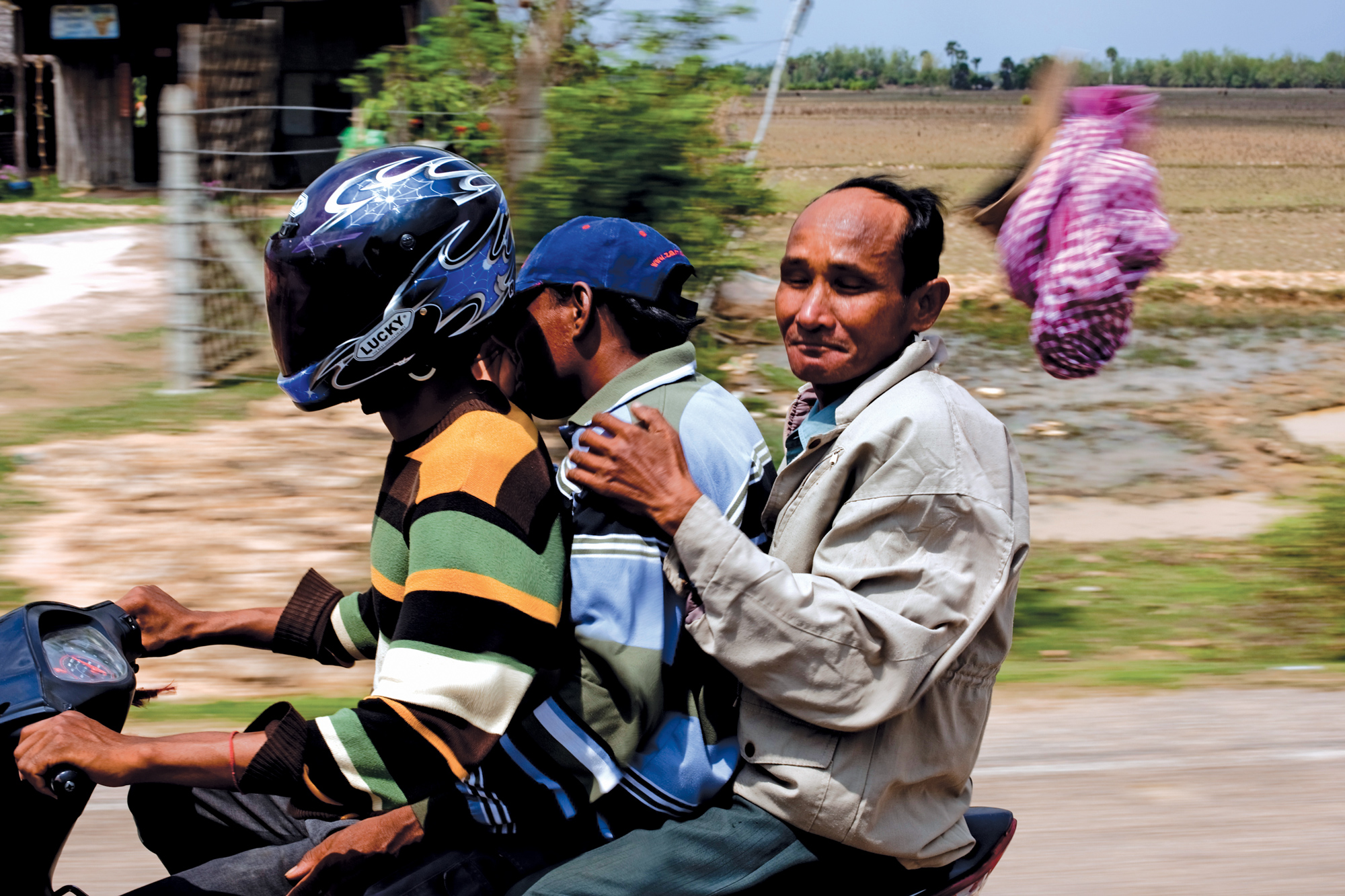
“I still haven’t shot my best picture yet,” he told Globe in a 2015 interview, in his 70s. “You can get close to perfection, as close to the 100% feeling as you can, but somehow you know it can still be better.”
Tim Page was a longtime friend of the Southeast Asia Globe and as an homage from our editorial team, we are proud to feature below some of his key pieces and collaborations with the magazine.
“Without the Vietnam war, I wouldn’t be”
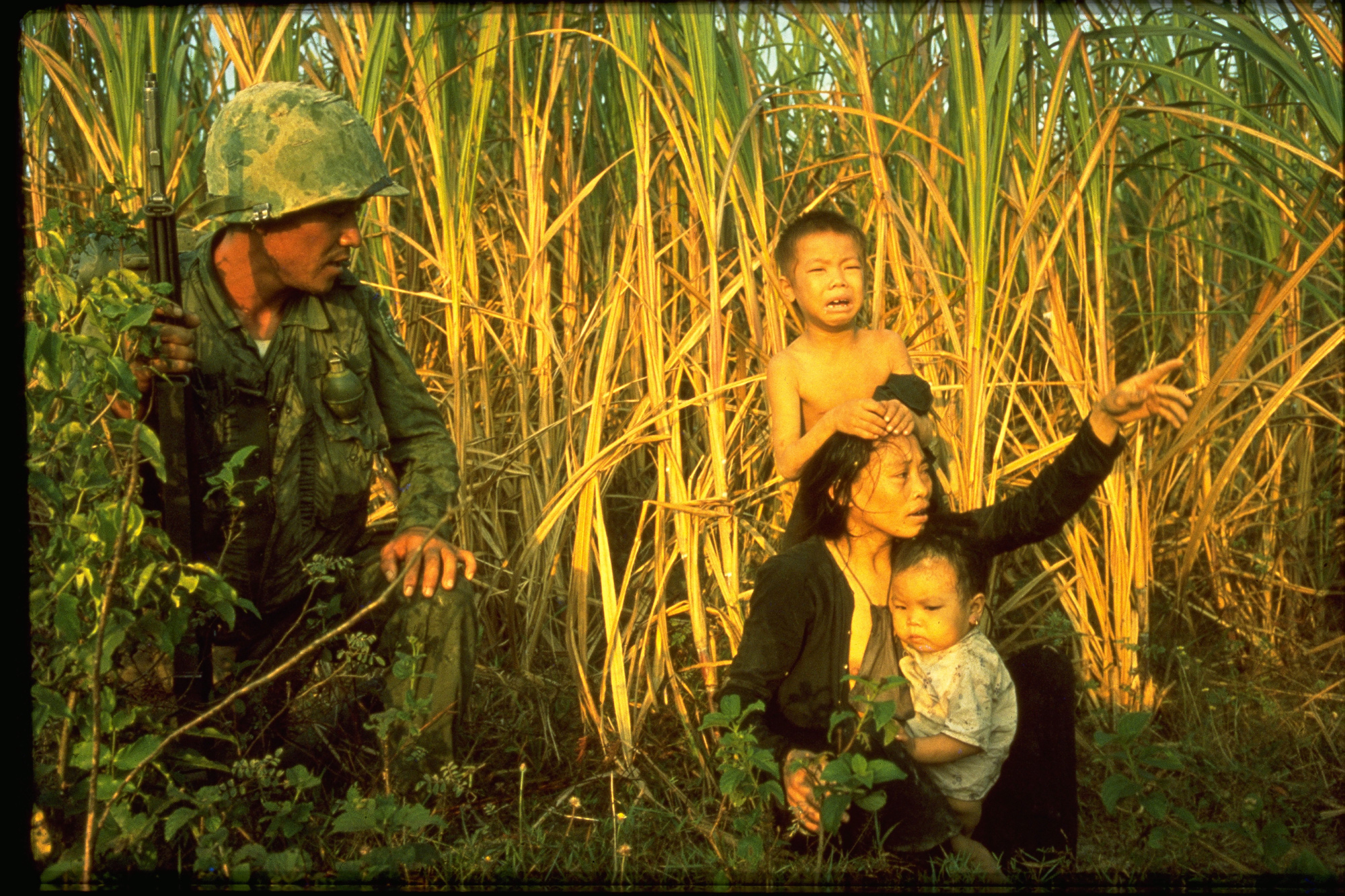
He shot some of the most iconic images of the Vietnam War, but Tim Page became just as famous for his ferocious appetite for life. Now 71 years old, he shares his memories and perspectives on photography, drugs, brushes with death and immortalising friends and colleagues lost to the brutality of war.
Beyond the battlefield: homage to Horst Faas
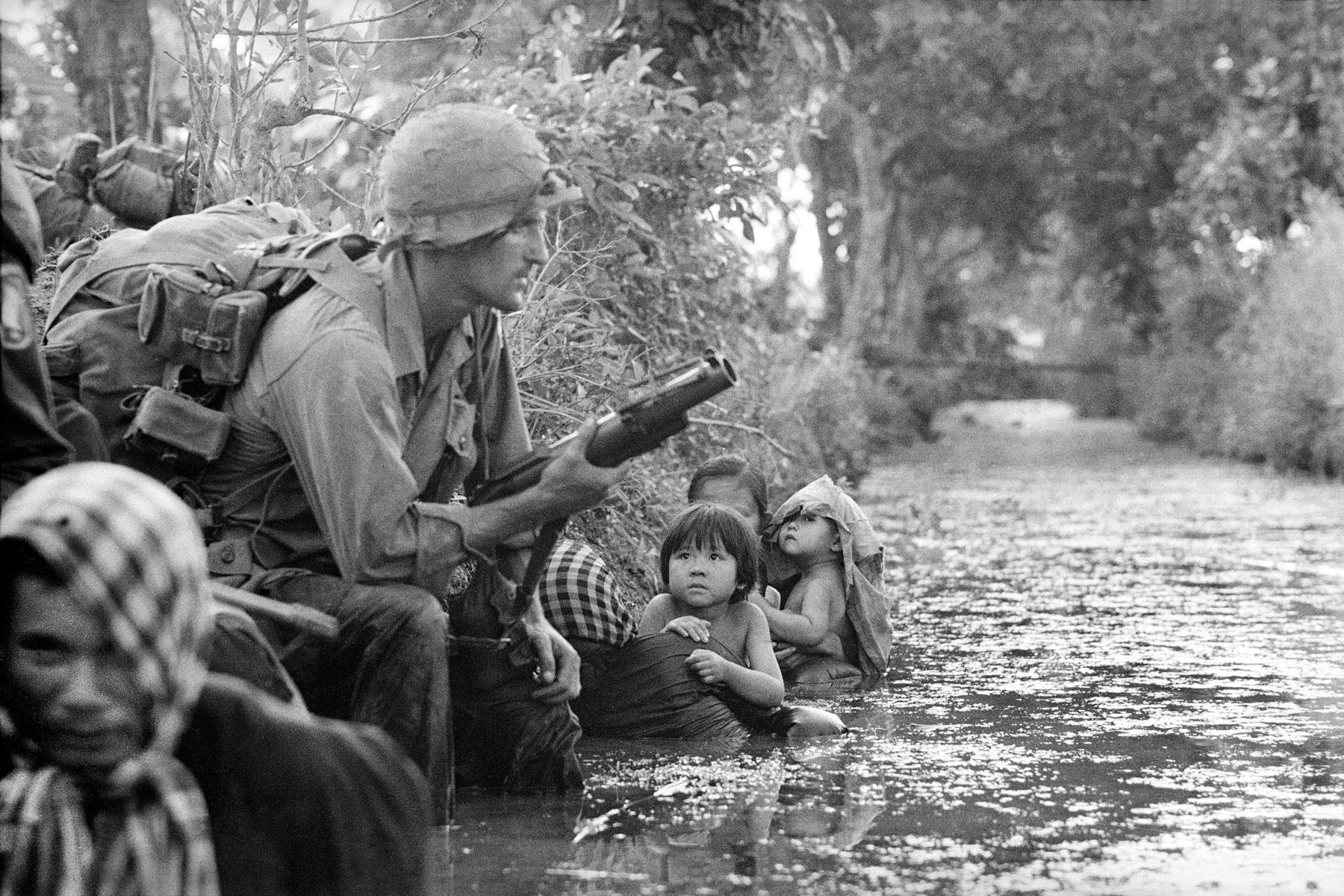
In this 2012 opinion piece, Tim Page paid homage to the German photo-journalist Horst Faas, who helped to redefine war photography and set new standards in showing the brutal reality of armed conflict.
A homage to the photojournalists lost to decades of war in Vietnam
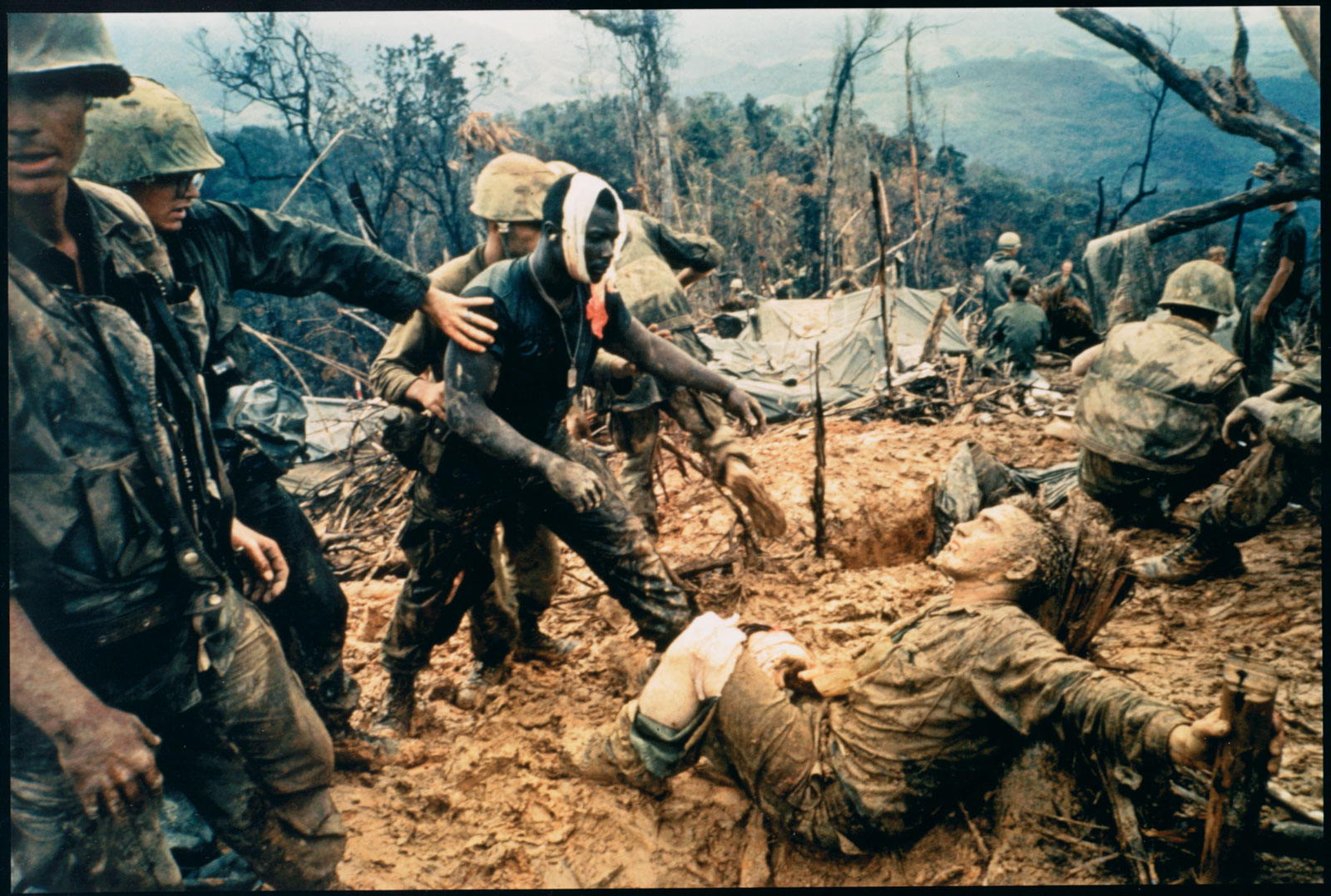
Our 2021 profile on Horst Faas and Tim Page’s book Requiem, discusses a tribute to the 135 photojournalists from all sides of the conflict who lost their lives in battle.


